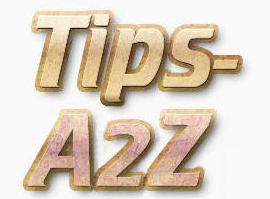Main > Hobbies > Fishing > Fly-fishing > Equipment
Warning: don't use drying silica-gel when storing a rod, as silica can rapidly corrode metals if it comes into contact with them. E.g. An expensive rod might be unusable if the threaded locknut (holding the reel in place) is seized with rust.
kellyjones00 (593)
|
|
|
Main > Hobbies > Fishing > Fly-fishing > Technique
Information sources: Internet; books and magazines; dvds; small or one-on-one classes; fishing clubs; observing others in person; best of all: Nature.
Panoculus (40)
|
|
|
Main > Hobbies > Fishing > Fly-fishing > Equipment > Flies
Flies: These are basically durable things that simulate fish food. Fish may try to eat anything small, including sticks, stones, rubber, plastic, cigarette butts. Usually they have favourite foods, such as larvae and flies, but may also eat bees, wasps, cicadas, mice, and water beetles.
Panoculus (40)
|
|
|
Main > Hobbies > Fishing > Fly-fishing > Equipment > Flies
Flies: Fishermen usually classify flies into how they generally behave: floating (dry), falling-in (terrestrial), staying below (wet/nymph), and coming-up (emergers).
Panoculus (40)
|
|
|
Main > Hobbies > Fishing > Fly-fishing > Equipment
AFTMA rating: tackle is usually classified by weight (wt) to deal with heavier fish (e.g. sea fly-fishing) and the speed of the rod-tip (e.g. stiff and fast goes further but with less accuracy). Lower numbers are lighter.
E.g.:
- Reels: 6 or 6wt - lakes and streams (trout); 10+ - seafishing
- Rods: the marking might be '9 - 6 - 4 - 1', meaning 9' long, 6 wt, disassembles into 4 pieces.
Panoculus (40)
|
|
|
Main > Hobbies > Fishing > Fly-fishing > Technique
General tips:
Don't lob overhead directly. The aim is to create energy through momentum, swinging the rod back and forward, until you finally let the weighted line fly away through the air to land gently and accurately on the desired spot.
Take a squash stance, standing side-on to where you want the fly to land. Prepare the line by creating momentum, then achieve momentum, then work towards the location over the entire period of the line settling into place.
The flexibility of the rod maintains the momentum of the line: the more flexible, the more even the energy quantity over the rod's reversal of direction.
Panoculus (40)
|
|
|
Main > Hobbies > Fishing > Fly-fishing > Locations
Lakes: Watch for ripples out in the lake indicating surface feeding, or for dorsal fins breaking the surface. The fly needs to land very closely and lightly, right at that point.
kellyjones00 (593)
|
|
|
Main > Hobbies > Fishing > Fly-fishing > Equipment > Flies
Carry around 5 copies of each fly-type. That way, when a fly is torn from the line, you can replace it and continue using the same pattern.
kellyjones00 (593)
|
|
|
Main > Hobbies > Fishing > Fly-fishing > Equipment > Lines
Don't forget to carry extra leader and tippet in case of loss during fishing (e.g. snags or a fish taking them).
kellyjones00 (593)
|
|
|
Main > Hobbies > Fishing > Fly-fishing > Equipment > Reels
Always buy a second spool identical to the first. Have it ready filled with backing and alternative type line, e.g. sinking line if the first spool has floating line.
kellyjones00 (593)
|
|
|
Main > Hobbies > Fishing > Fly-fishing > Equipment > Hooks
Make hooks barbless by crimping the barb flat with pliers. This can aid in removing a hook, especially for beginners who may hook themselves.
kellyjones00 (593)
|
|
|
